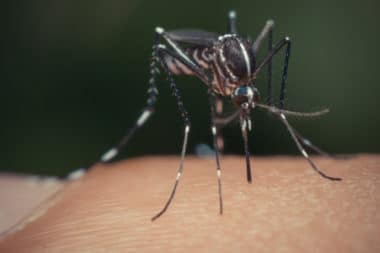One of the problems that homeowners always try to avoid is mold. By the time homeowners spot molds growing either on a wall or ceiling, they panic. That’s because molds are a type of fungus, and they’re usually called the unwanted intruders in your house.
Molds can grow indoors and outdoors, but they grow best when they’re indoors. Actually, they are a significant part of the ecosystem since they help decompose dead animals and plants. But, if they grow inside houses or offices, they pose major problems.
Every day, you are normally exposed to molds floating in the air. They float in small amounts, which makes them harmless. These floating mold spores can get into your house through your doors and windows, HVAC vents, clothing, and, sometimes, can even brought by your pets. As they enter your home, their growth depends on your home’s indoor conditions. They usually clasp unto your fabrics, wood surfaces, windows, kitchens, or bathrooms. If they settle on a damp area in your house, that’s when they start multiplying.
When you have molds growing inside your house, they will release plenty of spores into the air, which you can inhale easily. Once you inhale large amounts of mold spores, you become at risk of acquiring health problems.
Overall, molds should not be welcomed nor be overlooked when seen indoors. They may look like simple, harmless dirt, but they are actually dangerous. Here are the main reasons why molds are dangerous and should not be ignored:
1. Mold Poisoning
When you’re exposed to plenty of molds in your household, there’s a greater chance for you to suffer from mold poisoning. Molds can easily enter your body. They can enter through your nose, mouth, skin, or even through the food you eat. The longer they stay in your house, and especially in your body, they release poisons that can cause serious health problems.
You may have to look out for some of these symptoms, which may be caused by mold poisoning.
- Nose bleeding
- Headache
- Nausea
- Rashes or itching
- Asthma
- Fragrance sensitivity
- Night sweating
While these symptoms may pinpoint other health problems, these may be an indication that you need to detox your body from molds, especially if you’ve seen certain parts of your house with mold growth. A health blog, Sick of Being Stuck, published an article about the proper supplements you can take to start your mold detox. If you’ve felt the mentioned symptoms all at once, it may also be time to consult your doctor right away.
2. Allergies
Another common health problem caused by mold is allergies. Symptoms for mold allergy may be milder than mold poisoning, but that doesn’t mean this should be overlooked. Allergies can happen to a person due to the airborne substances released from the molds, which are then inhaled by your respiratory tract.
Symptoms for mold allergy include runny nose, frequent sneezing, watery eyes, itchy nose, and scratchy throat. If you already have asthma, getting mold allergies may cause you to have frequent asthma attacks. In this case, you need to call for a mold remover company’s help to eliminate all the molds in your house as soon as possible.
3. Breathing problems
The longer those molds stay in your house, the more time they have to multiply and release more spores and toxic compounds in the air every day. Over time, molds will produce irritants, allergens, and mycotoxins, which will create breathing problems in the household, especially for your family members who already have existing lung conditions.
These allergens will trigger your nose and throat, and eventually enter your lungs, which can start you having allergies, asthma, and becoming easily sensitive to dust and dirt.
4. Aspergillosis
There are actually multiple types of molds, and all these types can grow in one area. However, there’s no way you can differentiate one from the other through your naked eye, unless you look them up on a microscope. Nonetheless, it’s not necessary for you to be able to distinguish each type as long as you eliminate all of them out of your house.
The most common types of molds are Cladosporium, Penicillium, and Aspergillus. Out of the three, Aspergillus is the one that causes the most health problems. Aspergillosis is the term used when this type of mold is inhaled by humans. Some people can inhale spores from this mold without getting sick or feeling any breathing problems. But, those who already have an existing lung problem or have a weaker immune system are more prone to get infected by Aspergillosis easily.
Aspergillosis’s most common symptoms include shortness of breath, headache, sudden weight loss, fever, and, sometimes, cough with blood in it. If you’re feeling these all at once, consult your doctor immediately.
5. Sinusitis
When those mold spores find their way into your sinus cavity, your immune system will release this chemical called eosinophils as a way of fighting off the spores. This chemical can trigger sinusitis and irritation within your sinus. Moreover, it may be difficult to alleviate this type of infection since your sinus cavity is an excellent environment for the fungus to settle in.
Symptoms of sinusitis include a runny nose, swelling in the nasal cavity, coughing, poor sense of smell, headache, and body ache. It’s best to seek medical attention immediately so you can know whether you have acute sinusitis or chronic sinusitis. Plus, they’ll also recommend medications to alleviate the symptoms.
The Bottom Line
With the health problems that molds bring into people’s homes, it’s more than enough reason that you should regularly check your home for any sign of mold growth. Your home is supposed to be your family’s safe place away from the outside condition, so it’s your responsibility to ensure you keep it that way.
Not only do molds cause health problems, but they can also bring a negative impact on your house’s quality. The more molds you have in your walls, roof, or ceiling, the more your house’s foundation is at risk of damage, weariness, or, worse, collapse. That is why it’s vital that you call a professional contractor’s help to perform home maintenance and repairs at least quarterly. This way, molds will have a hard time growing indoors, and your family will be safe from serious health problems, and your house’s quality can last for a long time.








Reply